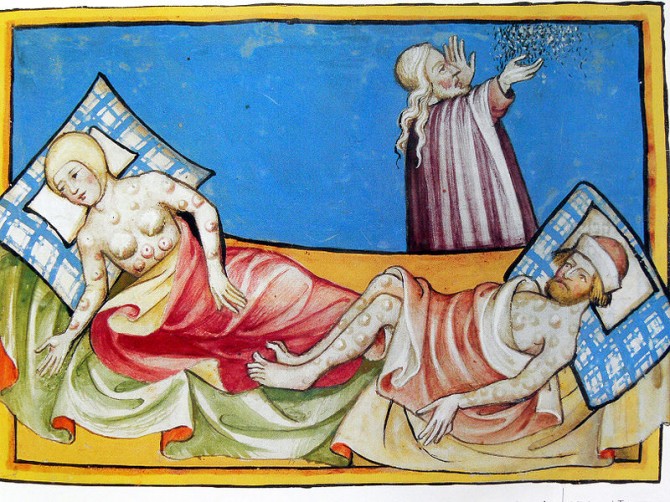The plague seems to have entered Europe in a number of ways, one theory for its arrival via Crimea is pretty dark. The Mongols laid siege to the town of Caffa in Crimea and catapulted dead bodies carrying the plague over the walls of the city. The Genoese traders fled taking the plague with them to Sicily where it happily travelled north at speed. Rats get the blame for the spread of the disease, and they may well have helped, but the biggest spreader of disease was probably the humans. Travelling salesmen, armies, people trying to escape the plague, monks moving around to pray for people. They all spread it far and wide.

The symptoms of the plague varied throughout the outbreaks, because of the three types of plague that Yersinia pestis can cause. But the main staple was buboes round the neck, groin and armpit. These buboes oozed puss and bled when opened. Here’s a description written at the time by a bloke called Boccaccio:
“In men and women alike it first betrayed itself by the emergence of certain tumours in the groin or armpits, some of which grew as large as a common apple, others as an egg…From the two said parts of the body this deadly gavocciolo soon began to propagate and spread itself in all directions indifferently; after which the form of the malady began to change, black spots or livid making their appearance in many cases on the arm or the thigh or elsewhere, now few and large, now minute and numerous. As the gavocciolo had been and still was an infallible token of approaching death, such also were these spots on whomsoever they showed themselves”
Most people who caught it were dead within two to seven days of infection.
☛ More Brutality: The Brutality Of Bear Baiting — Past & Present















